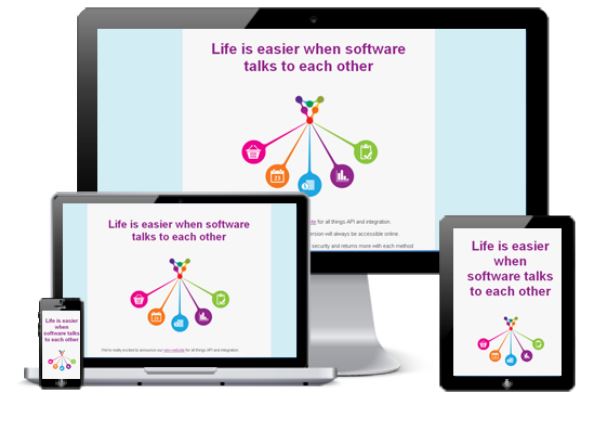Have you ever wondered if your emails are reaching their intended viewers? While it may seem simple, getting your emails to your subscriber’s inboxes can actually be more complex than you think. Optimising your email deliverability is one of the key aspects of promoting and ensuring campaign success.
There are a number of steps and screening processes that occur before an email actually reaches a recipient’s inbox. Recent studies have shown that approximately 20.4% of emails are flagged as spam or undelivered. We’re giving you a goldmine of tips to help your emails pass through all the filters and land in your subscribers inbox.
What is email deliverability?
Email deliverability is an email’s ability to reach the inboxes of its intended recipients without being flagged as spam by email service providers. Numerous factors may impact whether an email is delivered to a recipient. These include sender reputation, authentication protocols, historical engagement of recipients, spam filters, and more. Understanding and improving email deliverability is crucial for maximising the success of organisational email marketing initiatives.
What is the difference between email delivery and email deliverability?
Email delivery refers to whether or not your emails were received by your subscribers’ servers. An email is delivered if it does not bounce, however, that doesn’t necessarily mean it will land in your subscribers inbox. Email deliverability refers to emails that have avoided the spam inbox and are actually seen by your recipients.
Differentiating between email delivery and email deliverability can help narrow down the ultimate objectives of your email marketing campaigns. Reaching the recipient’s inbox is just one step of a successful engagement process. Optimising email deliverability can impact which folder the email is placed in and how successful further communication with the recipient will be.
What is a good email deliverability rate?
A Good email delivery rate would typically surpass 95%. Achieving a high deliverability rate involves:
- Creating valuable and relevant content
- Monitoring and improving your sender reputation
- Obtaining explicit consent from your recipients
- Respecting your subscribers preferences
What has the biggest impact on email deliverability?
1. Sender reputation
Sender reputation is an important gauge of how trustworthy your email domain is. Internet Service Providers (ISPs) and spam filters regularly analyse sender reputation to decide whether or not your emails should be placed in a recipient’s inbox or spam folder. Therefore, establishing and refining a positive sender reputation is crucial to enhancing your email deliverability rates.
2. Authentication
Authentication protocols such as SPF (Sender Policy Framework), DKIM (Domain Keys Identified Mail) and DMARC (Domain-based Message Authentication, Reporting, and Conformance), can help your business verify the integrity of your emails. To prevent your emails being incorrectly labelled as spam, our Vision6 experts can help set this up for you. It will also help improve ISP trust, enhance your sender reputation, and improve email deliverability rates.
3. Spam complaints and spam traps
Sustaining a low spam complaint rate is a crucial aspect of maintaining email deliverability. High spam complaint rates indicate dissatisfaction or low interest from recipients, resulting in ISPs directing your emails to spam folders.
Your business should also be careful not to accidentally send emails to spam traps. These are dormant email addresses used to identify and flag unsolicited emails sent by spammers. These spam traps are generally found in purchased lists which is why we strongly advise against using them to build your email database.
4. Blacklists
Blacklists help ISPs keep track of senders with a history of sending unsolicited spam or that have previously engaged in suspicious activity. Once a sender address has been added to a blacklist, servers automatically filter or even completely block emails from being sent from them. If your emails are continually being diverted to spam folders, you will be missing opportunities to truly connect with your intended target audience.
How to improve email deliverability
1. Authenticate your email domain
Creating a separate domain solely used for your business’s email marketing campaigns can help boost your sender reputation and segregate content from other email activity. This indicates a commitment to more responsible and ethical sender activity and can help build better deliverability with ISPs. It demonstrates the presence of a focused and intentional email marketing strategy.
2. Set up double opt-ins
Double opt-ins require customers to undergo an additional confirmation process to ensure they want to join your subscriber list. Double opt-ins require subscribers to verify their email addresses before being added to your email list.
Single opt-ins may increase subscribers, but it could affect deliverability as it is vulnerable to spammers. Double opt-ins are much more reliable since they require subscribers to demonstrate more intent, hence verifying that they are engaged and interested in your content. This increased engagement can help show ISPs that your subscribers are authentic and derive value from your content. This can increase the probability that your emails will reach their inboxes.
3. Regular database clean
Consistently reviewing and removing inactive or disengaged customers from your subscriber list can be an extremely effective way to improve email deliverability. A list of active subscribers not only means easier segmentation but an overall improvement across your open, click-through and unsubscribe email metrics.
4. Send Engaging Content
preferences, requirements, and interests. This can help build a personalised connection that can organically spark continuous curiosity and excitement, hence encouraging readers to open up and read your content.
Create content that consistently delivers value and effectively addresses pain points. This will significantly enhance your engagement and prevent subscribers from unsubscribing or making spam complaints.
5. Remove permanent bounces
Permanent bounces are non-existent or invalid email addresses that your business can no longer reach. This can be because the recipient address no longer exists, or it’s been sent to an incorrect domain. Constantly monitoring and removing permanent bounces can help you protect your sender’s reputation and enhance deliverability. In Vision6 we take away the manual labour or filtering through contacts and automatically remove permanent bounces from your list to protect your sender reputation.
Continuing to send content to these unreachable addresses can waste valuable organisational resources, impact sender credibility and result in your emails being flagged as spam. You can identify permanent bounces by proactively monitoring bounce rates and their potential sources.
6. Be aware of sending limits and volume
Avoid sending more than one email a day – if you start sending multiple emails per day, it will annoy your readers and look unprofessional. Not only will this lead people to unsubscribe, but it can also harm your reputation and deliverability.
Sending too many emails can make email filters think you’re a spammer and may automatically send your emails to the spam box. This proactive strategy can help your business adhere to prescribed limits to ensure that ISPs view your email content as legitimate and relevant.
7. Use branding in your ‘from name’
Your email marketing strategy is an extremely valuable opportunity to develop your brand identity. Using your brand’s name in your sender address can help make your email communication seem more professional and legitimate, as well as reinforce your brand recall. This strategy can also help significantly increase open rates and reduce the risk of your emails being flagged as spam since readers can immediately identify your brand’s communication and its legitimacy.
8. Make sure your IP isn’t on a blacklist
To ensure that your address has not been added to a blacklist, you should safeguard your domain reputation and undergo corrective measures such as identifying and preventing potential causes. Vision6 can help your business verify whether your email domain has been blacklisted and promptly take corrective measures.
If you are continually receiving high bounce rates you might want to look into the reason behind each bounce which is available in your Vision6 bounce report. If your bounce description shows up with any of the following it could potentially mean your email domain has been blacklisted.
| Bounce type | Description | Explanation | Typical reasons | What you can do |
| Temporary | Email Content Rejected | Something about the content of your message caused it to be considered undeliverable. | Spam Filter, Blacklist or Manual Restriction at Remote Server | Check your From Address/Name, Subject, Email Content and perform a Content Analysis. |
| Temporary | Content Filtered | The message has been flagged as spam by the recipient’s system. | Spam Filter, Blacklist or Manual Restriction at Remote Server | Check your From Address/Name, Subject, Email Content and perform a Content Analysis. |
| Temporary | Delivery not authorized | You were not authorized to send your mesage to the destination. This can be the result of per-host or per-recipient filtering. | Spam Filter, Blacklist or Manual Restriction at Remote Server | Check your From Address/Name, Subject, Email Content and perform a Content Analysis. |
| Temporary | Delivery Restricted | The destination mail delivery system temporarily did not allow the message to be delivered, due to a restriction mechanism in place. This may be related to use of a specific From Address, a misconfiguration of your SPF record or evidence of a previous Spam Complaint. | Spam Filter, Blacklist or Manual Restriction at Remote Server | Check your From Address/Name, Subject, Email Content and perform a Content Analysis. |
9. Use the right format
Your business should prioritise presenting your emails in a professional and clean format. The correct format is crucial to capturing a reader’s attention and delivering your message without any hiccups. Customers are likely to consume your emails on a number of different devices, so your content must be optimised for all screen sizes. If your message isn’t responsive, your readers will be missing out on the look and feel you spent so long perfecting.

Vision6 allows you to preview the desktop and mobile version within the designer so you can see how your email hold up on both devices before sending. It’s also important to provide a plain text email on top of your HTML versions, as many spam filters will use that version to check your message content.
10. Never send an email to a purchased list
While it may seem tempting to purchase a premade email subscriber list, these lists are almost always unverified or even spam traps that may significantly threaten your sender’s repyour email deliverability. Instead, your business should focus on organically building a systematic and engaged list of subscribers interested in your content.
Buying a subscriber list will not only put your company at risk regarding deliverability but is potentially in breach of the Spam Act 2003. By prioritising quality over quantity, you can ensure that your readers have clearly consented and are interested in what you have to say. This can protect your sender’s reputation and improve your open rates.
How to check email deliverability
Email engagements indicate how your subscriber consumes your content, impacting your overall brand reputation. Therefore, tracking customer data from your email marketing reports is crucial for understanding and improving your email deliverability.
Are you wondering how you can check email deliverability? One way you can evaluate your deliverability is to run a spam check before sending your emails. Vision6 provides users with robust spam check tools that can analyse your email content to identify any potential spam risks.
Final Takeaway
Understanding and implementing these email deliverability best practices can be transformative for helping your business enhance its email marketing strategies. Book a free demo to leverage the benefits of Australia’s most relaible email marketing software.


